We need your consent to use the individual data so that you can see information about your interests, among other things. Click "OK" to give your consent.
ASTM E2637-13
Standard Guide for Utilizing the Environmental Cost Element Structure Presented by Classification E2150
STANDARD published on 1.9.2013
The information about the standard:
Designation standards: ASTM E2637-13
Note: WITHDRAWN
Publication date standards: 1.9.2013
SKU: NS-45779
The number of pages: 10
Approximate weight : 30 g (0.07 lbs)
Country: American technical standard
Category: Technical standards ASTM
The category - similar standards:
Annotation of standard text ASTM E2637-13 :
Keywords:
CERCLA, characterization, cleanup technology, code of accounts, cost elements, cost estimation, cost management, decommissioning, decontamination, ECES, environmental cost element structure, environmental management, environmental remediation, environmental restoration, life-cycle costs, life-cycle phases, operation and maintenance, phases, program management, project management, RCRA, remediation, site investigation, standard classification, surveillance and long-term monitoring
Additional information
| Significance and Use | ||||||||||
|
5.1 In addition to its cost management and project management functions, the ECES can also be used to support a number of other program and project functions. These functions include: 5.1.1 Bid solicitation, collection, and evaluation; 5.1.2 Communicating project data between installations, complexes, agencies, and industry; 5.1.3 Providing a project checklist; 5.1.4 Cost and schedule estimating; 5.1.5 Historical cost/schedule data collection; 5.1.6 Historical project data collection (for example, technology deployments, project conditions); 5.1.7 Validating and calibrating cost estimates and software tools; and 5.1.8 Establishing and disseminating best practices and lessons learned. 5.2 Several government agencies are already incorporating this structure into existing and future cost estimating models, databases, and other similar software tools and systems. |
||||||||||
| 1. Scope | ||||||||||
|
1.1 The Environmental Cost Element Structure (ECES) covered by Classification E2150 (and Adjunct E2150) provides a consistent and comprehensive structure across all phases of environmental remediation projects and is a tool to improve the cost management of those projects. This guide is intended to facilitate the application of the ECES to any environmental remediation project, without regard to project size. 1.2 Classification E2150 establishes the broad, top-level framework for environmental remediation projects by providing a hierarchical list of project elements to two levels of detail. Its associated Adjunct E2150 supports the top-level structure by providing more detailed elements and definitions of the ECES to three additional levels of detail. Although it is assumed that the user is familiar with Classification E2150, much of the content of the classification is repeated in this guide to relieve the user of the burden of back-and-forth referencing during use. It is assumed, however, that all users of this guide will have at hand both Classification E2150 and the Adjunct E2150 during project planning. 1.3 The values stated in SI units are to be regarded as standard. No other units of measurement are included in this standard. 1.4 This standard does not purport to address all of the safety concerns, if any, associated with its use. It is the responsibility of the user of this standard to establish appropriate safety and health practices and determine the applicability of regulatory limitations prior to use. |
||||||||||
| 2. Referenced Documents | ||||||||||
|
Similar standards:
Historical
1.2.2009
Historical
1.7.2010
Historical
1.5.2014
Historical
1.7.2011
Historical
1.6.2008
Historical
1.1.2014
We recommend:
Updating of laws
Do you want to be sure about the validity of used regulations?
We offer you a solution so that you could use valid and updated legislative regulations.
Would you like to get more information? Look at this page.


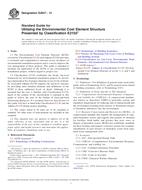
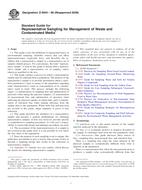 ASTM D6044-96(2009)..
ASTM D6044-96(2009)..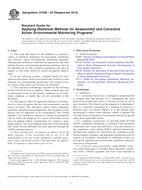 ASTM D7048-04(2010)..
ASTM D7048-04(2010)..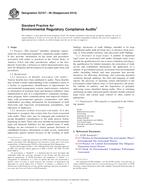 ASTM E2107-06(2014)..
ASTM E2107-06(2014)..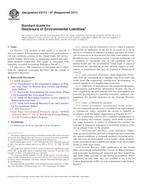 ASTM E2173-07(2011)..
ASTM E2173-07(2011)..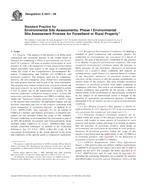 ASTM E2247-08
ASTM E2247-08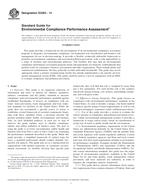 ASTM E2365-14
ASTM E2365-14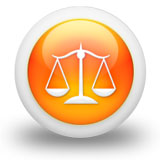
 Cookies
Cookies
